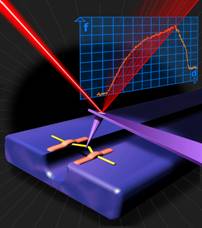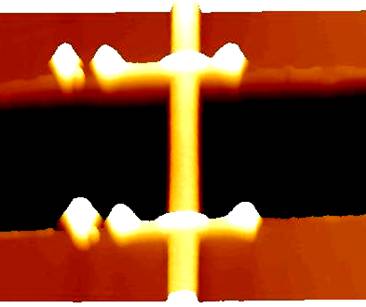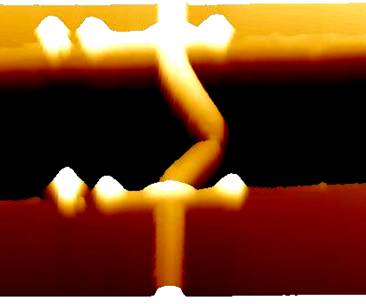Nanoscale Characterisation & Processing |
|
Main Navigation
|
Mechanics of Nanoscale Materials Nanoscale materials have unexpected and novel mechanicals properties, with wide ranging applications in the areas of sensing and high frequency switching. To measure these properties we have developed a new AFM measurement technique that overcomes the earlier limitations of wire-substrate friction and poorly defined pinning contacts. This method involves pinning a wire over a trench and measuring the lateral defection of an AFM cantilever while the wire is mechanically deformed. The advantage of this approach is that it is possible to measure the elastic and plastic response of the wire, in addition to wire failure. Measurements have been preformed on a range of metallic and brittle ionic wire systems. In the case of the former, clear evidence for work-hardening is observed even for wires down to 40nm. Moreover, the strength of the smallest wires approach the theoretical value of E/10, where E is the Young’s’ Modulus. In contrast, ionic systems show no evidence of ductility, but rather brittle failure. This method is currently being extended to allow electrical characterization during mechanical manipulation. The goal is to understand the factors that control failure in nanomaterials and the influence of mechanical deformation on nanoscale transport. The ability of chemical modification to influence mechanical properties is also of interest.
Force-displacement curves recorded during a series of consecutive plastic deformations of a 200nm Au wire. The curves shown have been shifted relative to each other to demonstrate that the maximum plastic deformation on a given cycle determines the yield point for the next cycle. Consecutive yield points are labelled
Above are three AFM images showing a series of manipulations of a 200nm Au nanowire. |





